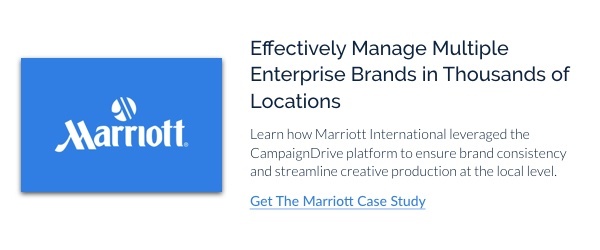Enterprise DAM or digital asset management for major companies describes the process of organizing all digital content, from internal documents to marketing materials, to multimedia content. Enterprise DAM software encompasses both the infrastructure for storing these assets and metadata information, along with descriptive tags and search functions for navigating through large and complex data libraries.
Traditionally, DAM tools were inefficient, complex, and difficult to implement, manage, and maintain. However, the application of technological advancements is disrupting DAM as we know it, transforming it into an integrated end-to-end, user-friendly, converged ecosystem that is easy to manage and maintain.
Enterprises are creating digital assets at an astonishing rate. One study found that 90% of all data today was created in the past two years, at a rate of 2.5 quintillion bytes per day. However, only 1/10 companies currently use DAM solutions, leaving opportunities to scale success and innovate new campaigns on the table.
With this exponential growth of data, creating organized systems to store, search, access, and share assets is essential for businesses in reducing:
• Wasted time
• Incorrect usage
• Delayed campaigns
• Branding inconsistencies
Here are several technological advancements that are disrupting enterprise DAM as we know it:
1. Cloud-Based Infrastructure
Enterprise DAM benefits from cloud deployments are scalable, agile, and web-accessible. Cloud-based digital asset management systems tend to be cheaper and easier to implement than on-premise systems that require expensive and high-maintenance hardware.
A cloud-based system also allows employees to easily access the platform from anywhere in the world, without the need to download or update software, enabling them to accelerate the creation of timely marketing campaigns.
2. Data Analytics
Technological improvements in gathering and analyzing data allows companies to enhance visibility and monitoring within their systems, while also gaining key internal and consumer insights for better decision-making. This can be applied to digital assets by optimizing marketing campaigns to result in better audience engagement and even improving budget allocation.
3. Channel Convergence
An effective DAM system must be able to track and manage all assets, regardless of where those assets are delivered. By converging brand assets from online and offline channels, including website, social media, and email, businesses can break down functional silos to become omnichannel performers.
Especially helpful for local marketing initiatives, these integrations allow marketers to extract richer insights into consumer behavior and sentiment while maintaining accurate cross-channel messaging.
4. Automation
Marketing automation has disrupted manual processes, helping businesses work faster and more accurately. Automating various tasks and workflows within digital asset management can increase content creation and distribution processes across business locations.
Machine learning algorithms, another method of disruption by automation, eliminates the process of manual tagging and can identify and systemize tagging to maintain standardization and reduce human error.
5. Integration
Digital assets can live within a variety of software and applications that, when connected through marketing resource management integrations, drive valuable business insights. Application programming interfaces (APIs) can integrate DAM functions to exchange data with other tools throughout an organization. An asset library that integrates with a customer management systems, for instance, can be used to create a workflow that sends relevant content to specifically targeted audiences.
Tools that optimize enterprise DAM, like CampaignDrive, have modernized their software with these industry disruptors in mind to improve the way businesses monitor, track, maintain, and distribute digital assets.
A recent survey found that after adopting a cutting-edge DAM system, respondents realized:
• Increased revenue (79%)
• Reduced asset creation costs (97%)
• Reduced risk (86%)
• Increased productivity (97%)
CampaignDrive is a cloud-based platform that empowers large enterprise companies with hundreds or thousands of locations to centralize and manage a growing volume of content and digital assets.
Regardless of a team members location, marketers and designers at the corporate level can create and distribute on brand assets for local marketers to customize for their community-based campaigns.
With CampaignDrive, the team can determine and limit which elements of a digital asset can be personalized, ensuring that all materials are consistent and on brand to accelerate business growth at a national and regional level.
To learn more about how you can develop, distribute, and amplify your brand and maximize the value of your local campaigns, connect with a CampaignDrive expert for a platform demo today.
Sources:
1. https://www.domo.com/learn/data-never-sleeps-5?aid=ogsm072517_1&sf100871281=1
2. https://webdam.com/infographics/digital-asset-management-infographic/
3. http://www.brandkit.io/assets/pdf/Proving-the-Value-of-Digital-Asset-Management.pdf





